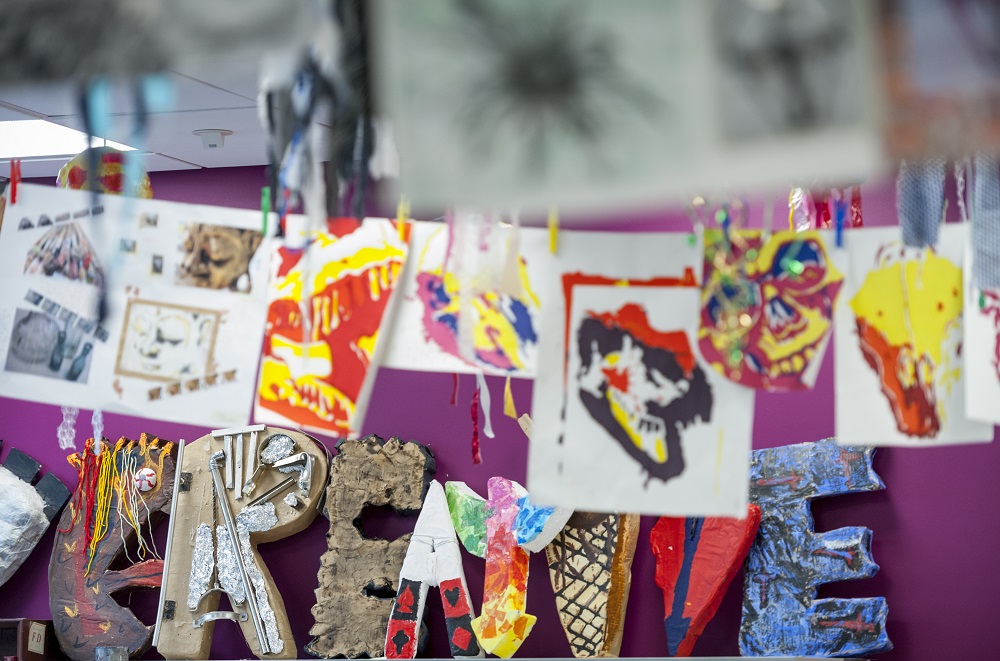Art and Design (Fine Art): A-level
Qualification: A-level
Exam Board: AQA
Entry Requirements: Grade 4 or above in any of the GCSE Art and Design specifications (including 3D Design, Clay, Photography and Fine Art)

Success, creativity and a range of techniques
The Art Department offers an exciting, broad, and diverse A-level experience. Students can work on canvas, create large scale prints, etchings and paintings, explore mixed medias, photography and film and use fabric and sewing in their work, coupled with the opportunity to make large scale sculpture and installations. There are very few avenues we won’t explore!
These diverse opportunities and our knowledgeable staff – who have expertise in fine art, ceramics, sculpture, installation art, textiles, jewellery design and photography - mean that students do well, and often go on to study in a creative environment.
Students have the opportunity to undertake workshops and experiment with wider ranges of materials, techniques and processes at the beginning of the course, which gives them confidence in their own creative processes and more willing to take risks with their own aesthetic.
The course
The first year of the course is a mixture of small projects and skills workshops. Students spend this important time developing their practice. They explore what it means to be an artist and how to develop their work and explore a huge variety of techniques, materials and processes that help them discover their strengths and interests. We take students to life drawing classes at Sheffield Hallam University and there are opportunities to talk to and work with practising artists, throughout the course.
At the end of the first year and into the second year, students work on the personal investigation project, a project that is student driven and where they will work independently to develop their ideas and creative vision. This project will make up 60% of the overall grade and will consist of an in-depth and personal portfolio of work that includes a written element of between 1,000-3,000 words.
Beyond the classroom
Varied outside learning experiences are part of the course, including:
- Visits to Sheffield Hallam University: students experience life drawings and exhibition openings
- Sketch crawls in both the Peak District and Sheffield city centre: students draw, take photographs, and observe the contrasting environments.
- Residential trip: previously visiting London, next academic year we will visit Paris. Students will immerse themselves in the historical city of art, visiting the Louvre, Pompidou Centre, Musée d'Orsay and Eiffel Tower to enable them to appreciate the diversity of this culture.
The impact of these experiences is evident in the way students’ work becomes more personalised.
Progression
There are many opportunities for students who have studied Art A-level, with many universities seeing a creative subject as the key to giving students a strong foundation for problem-solving skills and creativity. Increasingly, students’ art portfolios are warmly received for careers in subjects like engineering, science or medicine.
Almost all universities accept art as an A-level for UCAS applications, and the portfolio of work is a welcome addition at interview to show a range of skills and strengths of the candidate. Many of our students go on to study art foundation courses that lead to university courses in fashion, textiles, architecture, fine art, sculpture, set design, game design, graphics, 3D design and ceramics, marketing, PR, business and medicine. An art A-level can lead to a career in the creative industries like festivals, curating, publishing, TV and radio.
